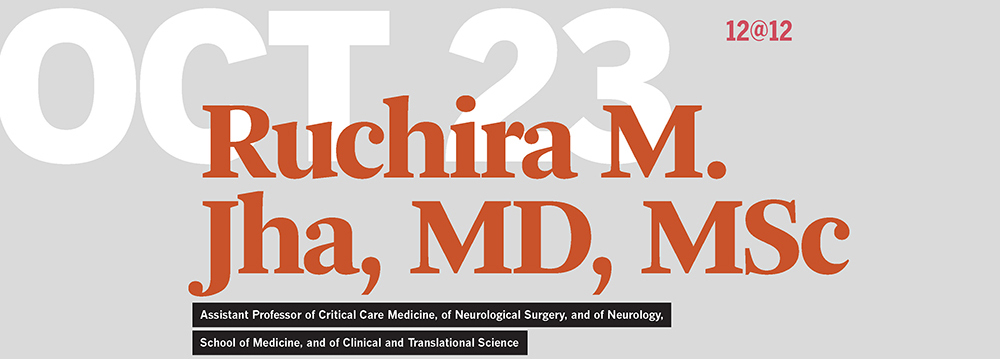Topic Overview:
Cerebral edema and associated intracranial hypertension are common causes of death and disability in many acute neurological conditions, including acute ischemic stroke, hypoxic ischemic injury, subarachnoid hemorrhage, and traumatic brain injury. Jha works with a team of clinical and basic scientists to understand a unique and fundamental mechanism underlying cerebral edema involving a cation channel known as Sulfonylurea-Receptor 1- Transient Receptor Potential Cation Channel Subfamily M, aka Sur1-Trpm4. Jha and colleagues have evaluated the expression and inhibition of this channel in multiple different preclinical models of traumatic brain injury, the biomarker potential of the protein, as well as the effects of genetic variation in these genes on clinical phenotypes of intracranial hypertension, radiographic edema, and contusion expansion in a large cohort of severe TBI patients from the University of Pittsburgh.























